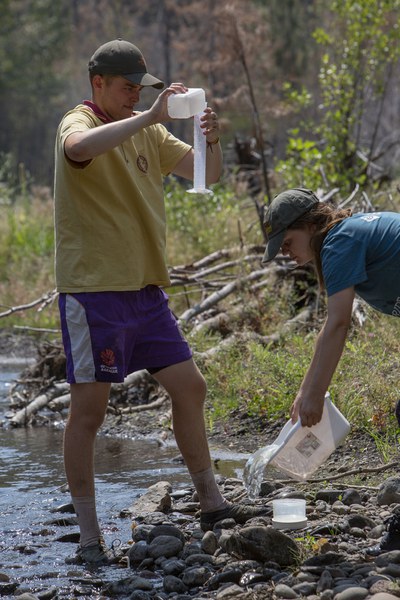We are so thrilled to be re-inviting Dr. Suzanne Brander to share about her research during our 2021 Virtual Nature Night series. Get excited to learn more at our upcoming Nature Night: A Closer Look at Microplastics by taking this quick dive into the teenie-tiny world of plastic pollutants.
What are microplastics?
Microplastics are just what they sound like, teeny-tiny pieces of plastic measuring less than 5mm long.
There are two categories of microplastics: primary and secondary.
- Primary microplastics are plastics that were originally created to be very small. These include plastic fibers in synthetic textiles, or the more well-known tiny plastic beads found in cosmetic scrubs and domestic products (yeah, check your ingredient list, if it has polyethylene, it’s a plastic-full product).
- Secondary microplastics are plastics that were originally much larger and have broken apart into smaller pieces. As plastics age, they become more brittle and begin fragmenting into smaller and smaller pieces. The smaller the piece of plastic, the more easily they slip into our waterways, soils, and foods.

These manufactured materials are foreign to our natural systems and are designed to be extremely durable—meaning they will be here for thousands and thousands of years. Microplastics are also everywhere. In an emerging field of study, scientists are detecting them in water (tap, bottled, river, ocean, glacier, you name a water type--they’re there), seafood, sand, beer, and even the air we breathe. According to researchers these "pervasive plastic bits have spread into virtually every crevice on Earth." Animals of all kinds are ingesting microplastics. From water bugs and small fish to birds and the largest mammal on earth—the whale—microplastics have been found in all kinds of animals. Researchers estimate conservatively that humans are eating at least 50,000 microplastic particles every year.
Sure, ingesting thousands of plastic particles is concerning, but even more concerning is the reality that we don’t know what this kind of plastic pollution means for our health or for the health of our planet. Microplastics research is still in early stages, and even without the years and years of data current scientific studies require, the results are already alarming. We are beginning to understand the cycle and ways the plastics are moving across the globe. Already research suggests microplastics may transfer harmful chemicals, they may cause tissue damage, and they can even affect the physiology of organisms that ingest them. We still have a lot to learn before we find a solution, and it may be decades until we fully understand our plastic problem.
What we do know is that these teeny plastic particles are another reminder of the massive impacts humans can have on our world. When we think of plastic particles as the fingerprints left behind by humans, we see that humans have touched the depths of the ocean, our world’s remote mountains, and our most beloved rivers.
What we do affects our world, and the lives of every other living thing—oftentimes in ways we don’t understand.
Want to learn more?
Join us for our January Nature Night, A Closer Look at Microplastics with Dr. Suzanne Brander a leading scientist in the emerging field of microplastics research.
Learn more:
- Local Central Oregon students move Bag Ban to reduce single-use plastics in our area.
- Listen to Dr. Suzanne Brander explain ‘What’s so Bad About Plastic?’ on the This Week in Science Podcast.
- Read an interview with ecotoxicologist Dr. Suzanne Brander on how she became a scientist.
Sources:
- A Global Assessment of Microplastics in the Ocean by the Joint Group of Experts on the Scientific Aspects of Marine Environmental Protection.
- Encyclopedia Britannica: Microplastics
- Human Consumption of Microplastics, Environ. Sci. Technology, Cox et. all 2019.
- National Geographic: Microplastics have moved into virtually every crevice on Earth.
- Microplastic pollution revealed absolutely everywhere by Damian Carrington.


